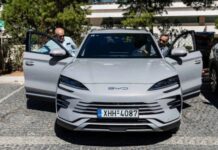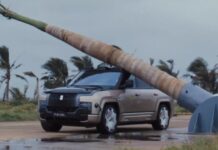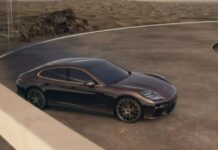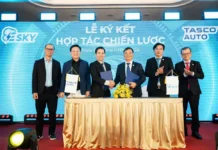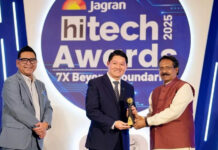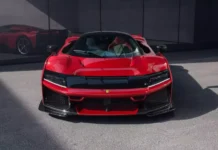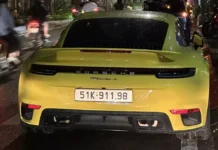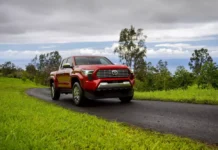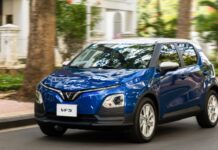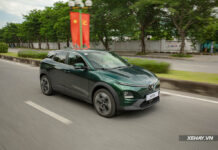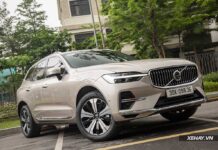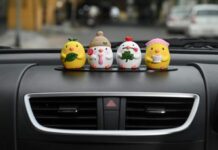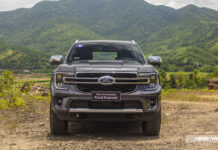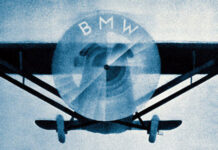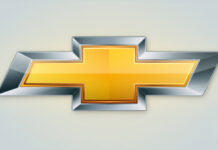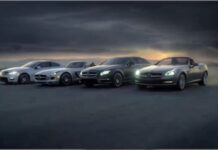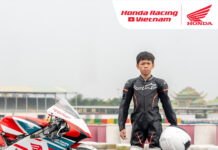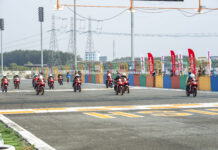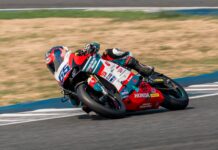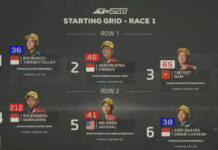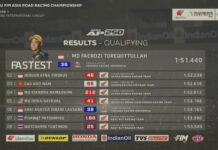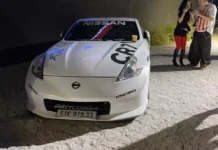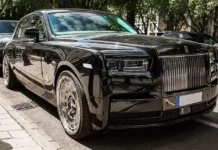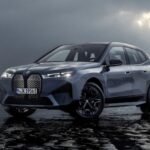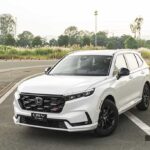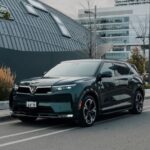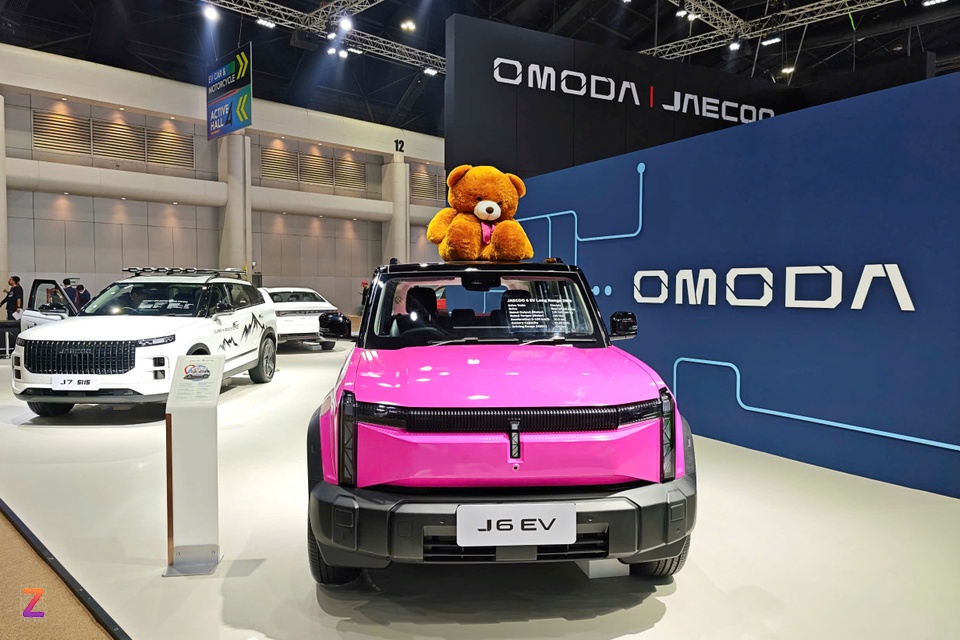
|
The Chinese automotive wave of 2024 brought a plethora of new brands to Vietnamese consumers, offering a diverse range of options from gasoline and hybrid vehicles to pure electric cars.
However, not all car brands achieved immediate success in Vietnam. A few even had to downsize their operations despite prolonged market research beforehand.
A Flood of Entrants, but a Cautious Approach
2024 and the beginning of this year witnessed a large number of Chinese car brands flooding the Vietnamese market, including Lynk & Co, BYD, GAC, Aion, Omoda, and Jaecoo, alongside Geely and the return of Haval and Dongfeng.
The well-known electric vehicle brand Wuling is revamping its product line, while MG is entering the electrification game with the MG4 EV, one of Europe’s best-selling electric SUVs.
Contrary to the “flood” in terms of scale, Chinese car brands entering Vietnam during this period exhibited notable caution.
For instance, Omoda’s distributor organized test drives of the C5 for the media at the beginning of 2024, but the official launch of this B-segment SUV didn’t happen until the end of the year.
|
|
|
The Omoda C5 made multiple appearances during test drive events before its official launch. Photo: Vĩnh Phúc. |
BYD followed a similar strategy, hosting multiple test drive events of varying scales and even postponing its official launch before introducing its electric vehicle lineup, including the Dolphin, Atto 3, and Seal, to the Vietnamese market.
Geely also unveiled the Coolray and arranged test drives for customers about a month before its official launch.
These moves by Chinese brands were partly to gauge the market and find the right price points, and partly to allow Vietnamese consumers to experience the new models firsthand, even before the official launch and price announcement.
Aion, GAC’s electric vehicle brand, took an even more cautious approach, spending an entire year exploring the market. They had completed their showroom well in advance of their official launch.
|
|
|
Allowing customers to test drive cars before the official launch is a strategy favored by many Chinese car brands in Vietnam. Photo: Phúc Hậu. |
The prudence exhibited by Chinese car brands is understandable given the less-than-favorable perception of Chinese automobiles in Vietnam.
This strategy of offering test drives before announcing prices also helps these brands gauge customer psychology and either fine-tune their pricing or develop more affordable versions to enhance their competitiveness.
For instance, the recently launched Geely Coolray, priced between 538 and 628 million VND, is one of the most affordable SUVs in its segment. Omoda also introduced the Luxury version of the C5, priced at 539 million VND, but offered a discount to bring it below 500 million VND for a limited number of early customers.
Previously, a source from Tri Thức – Znews shared that the New MG5 achieved decent sales in Vietnam thanks to its competitive pricing of 399 million VND, which is on par with the price of A-segment cars but for a C-segment sedan.
But Will They Succeed?
In Thailand, BYD continued its success story by becoming the best-selling electric vehicle brand, according to Car News China. BYD sold 6,191 units in the Land of Smiles in 2024, capturing a 14.4% market share in the pure electric vehicle category.
According to a report by PwC, the market share of Chinese automobiles in six Southeast Asian countries, including Indonesia, Thailand, Malaysia, the Philippines, Singapore, and Vietnam, increased from 3.4% in 2023 to 5% in 2024.
BYD held a 1.8% market share in these six Southeast Asian countries in 2024, per the PwC report. SAIC Motor’s brands accounted for 1.7%, while Chery maintained a 1% market share, a significant growth from just 0.1% in 2023.
| Chinese automobiles are gaining popularity in Southeast Asia | ||||
| Market share of Chinese, Japanese, and Korean car brands in Southeast Asia in 2024 (Data source: PwC) | ||||
| Label | Japanese | Chinese | Korean | Others |
| Market share | 63.9% | 5% | 5% | 26.1% |
In Vietnam, however, BYD and Wuling don’t seem to pose a significant challenge to VinFast in the pure electric vehicle category. While BYD doesn’t disclose its sales figures, Wuling reported a 130% increase in sales of the Wuling Mini EV, reaching 1,358 units in 2024. BYD remains a rare sight on Vietnamese roads, and Wuling has been consistently reducing prices for its models, seemingly downsizing its operations.
VinFast emerged as Vietnam’s best-selling car brand in 2024, with over 87,000 units sold. This achievement places VinFast at the forefront of the electric vehicle market in Vietnam, while its competitors remain tight-lipped about their sales figures.
Beyond brand value and vehicle quality, Chinese electric vehicles in Vietnam face additional hurdles, such as infrastructure limitations and even debates about charging standards that differ from the prevalent ones in the country.
Several factors contribute to the challenges faced by Chinese electric vehicle brands in Vietnam, and addressing these issues is crucial for their long-term success.
For instance, BYD’s official product portfolio currently includes five pure electric models, but the BYD M6 stands out as one of their most successful offerings due to its competitive pricing and its ability to cater to the underserved mid-size MPV segment in the Vietnamese market.
|
|
|
The BYD M6 is considered one of the most successful Chinese automotive models in Vietnam. Photo: Phúc Hậu. |
BYD’s response to the lukewarm reception of their electric vehicles in Vietnam could be the introduction of the hybrid plug-in Sealion 6. With a range of up to 1,200 km on a single charge and a full tank of gas, the Sealion 6 is expected to be another best-seller for the brand in Vietnam.
TMT Motors, the distributor of Wuling electric vehicles in Vietnam, previously promised to introduce a more affordable version and an SUV variant of the Wuling Bingo in the first quarter, but no new developments have been announced.
TMT Motors also revealed plans to bring Baojun electric vehicles to Vietnam and listed four models from this brand on their official website, only to remove them later for unknown reasons. Their current product lineup only includes the Wuling Mini EV and two versions of the Bingo with ranges of 333 km and 410 km.
Aion, on the other hand, doesn’t seem to be reaping the rewards of their prolonged cautious approach. According to Tri Thức – Znews’s observations, Aion’s sole dealership in Ho Chi Minh City has ceased operations.
The location that once housed the Aion showroom now displays BYD vehicles, operated by Harmony Vietnam, a subsidiary of Harmony Group, the largest distributor and dealer of BYD worldwide.
|
|
|
The former Aion dealership has transitioned to selling BYD automobiles. Photo: Phúc Hậu. |
In the gasoline-powered segment, MG is currently considered the most successful Chinese car brand in Vietnam. They recently launched the MG G50, a competitively priced mid-size MPV with a standard version that undercuts most small MPVs in the market.
Omoda and Jaecoo have introduced their SUVs, among which the Jaecoo J7 PHEV is the second plug-in hybrid in the affordable segment, preceding the BYD Sealion 6, which is set to launch at the end of April.
Haval quietly started selling the Jolion, and Dongfeng has hinted at a comeback to Vietnam with new models. Geely has already entered the market, and Zeekr is expected to follow suit, both under the distribution of Tasco.
Overall, the Vietnamese automotive market is buzzing with the entrance of multiple Chinese brands. Whether they will succeed or fail remains to be seen, but their presence is undoubtedly offering Vietnamese consumers more options in terms of products, segments, and price points.
Books to Read on the Go
The Xe section presents a selection of captivating books to keep you entertained during your journeys. Whether you’re on a short commute or a long road trip, these titles will make great companions.
VinFast Expands its Horizons: Strategic Partnership with Four Reputable Filipino Companies to Enhance Service Network
VinFast is proud to announce its collaboration with four esteemed partners in the Philippines: Goodyear Philippines, Tire King and Rubber Products, Power Tread Services, and Marcjan Cavite. This strategic partnership reinforces VinFast’s commitment to delivering exceptional products and services to its customers in the Philippines and beyond. With these renowned partners by their side, VinFast is poised to make a strong impact in the Philippine market and continue its journey towards becoming a global automotive leader.

